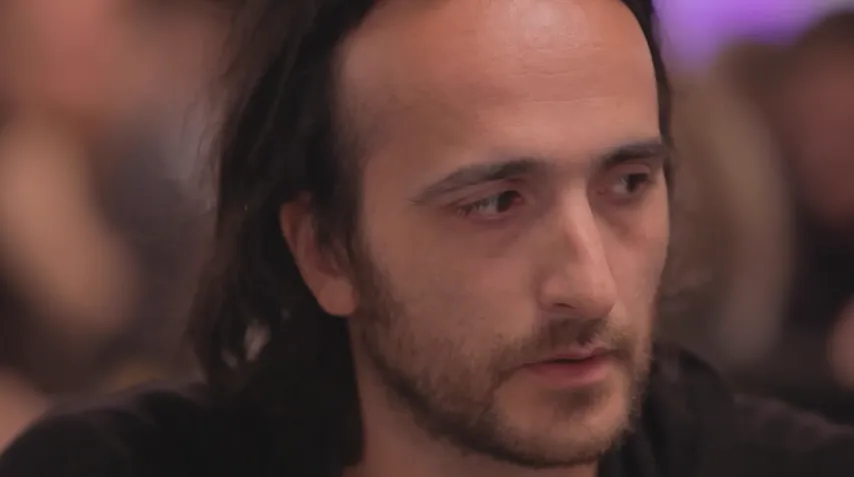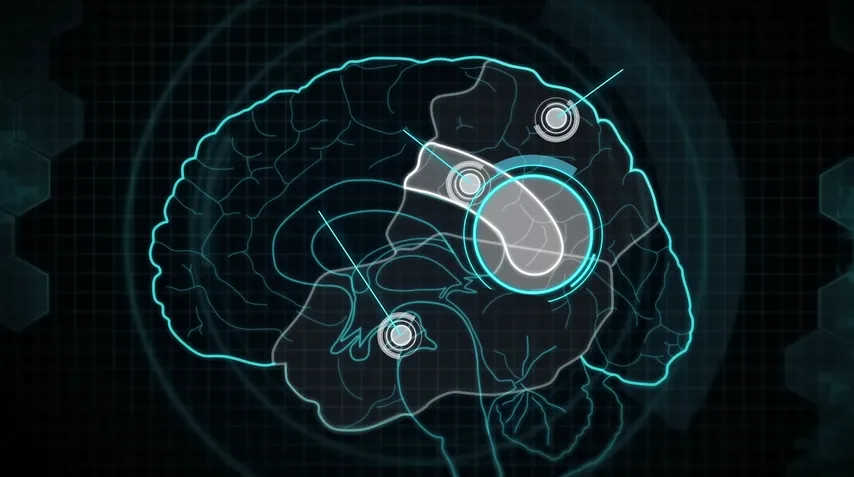For the first time, we're going inside the mind of a poker player.
We chose an unusual place – a former factory – to install a one-of-a-kind scientific laboratory. Cameras, electronic sensors, monitors, and right in the middle, a poker table. Here it is: the first poker game in the world played under scientific scrutiny.
For over 10 years, this 36-year-old Belgian, Davidi Kitai, has been one of the world's best professionals and has won several big tournaments.
"Tournaments are my real passion because they aren't only financial stakes, it's really a competition," David explained to the cameras.
"I've played soccer since I was little. I've always been a big competitor, I've always loved board games, I've always done anything to win. So with poker, there's all that – there's a balance between the adrenaline in the game and the competition that you have in sports in general."

Poised and thoughtful, this natural-born player is known for his old-school, instinct-driven poker style.
"I listen to my intuition a lot. I'm a player who often follows his feelings, and of course, feelings are not an exact science. You can't always explain it. It's simply a lot of information stored in your subconscious, and you feel there's a hand you want to call but you don't know why. So afterward, the goal is to find the reasoning behind it, to know why your intuition told you that."
Intuition comes from logical deductions.
Davidi observes and adapts his strategies to exploit his opponents' tiniest weaknesses. Bluffing is one of his favorite weapons.
"You almost have to bluff in this game because you only have two cards," Davidi, one of Belgium's best explained. "It's really rare for people to have a good hand. Most of the time no one has anything, so you have to know how to take advantage of that and from time to time, steal hands. Bluffing is a very important weapon in poker."
True to his style, he attempts to bluff several times in our game.

"And in Davidi, you see something, right?" poker expert Stephane Matheu asked his colleague. "There is a strong increase in his heart rate, and the electrodermal tension is very high."
"His expression is completely focused – it's impressive," body language expert Stephen Bunard agreed, "As if there was a link between the intensity of watching an opponent and the size of the bluff. This aligns with preconceived notions about a certain type of liar who stares someone down when lying.

There's no single way to lie – there are many ways. Here we see the conquering liar, the bluffer who pays attention to the one being bluffed, because the bluffer must be very aware of any sign showing if the bluffee is swallowing the bluff or not."
Davidi's strength is also his ability to read other players' minds. When Floron has a winning hand, Davidi will decide whether to fold or keep playing just by observing Floron attentively. "You're not bluffing" – it's Davidi's greatest talent. While he has many talents, it's really his ability to read opponents, assessing whether they're bluffing or not. He has become extremely famous in the poker world for winning with weak hands simply because he thinks his opponent is bluffing, and he's rarely wrong about his opponent's bluffs.
When Davidi bluffs or tries to call someone else's bluff, he enters into a real psychological confrontation with his opponents. To do this, he uses a particular area of his brain.
Thanks to a more advanced test, we would like to enter Davidi's head.
So we're off to Colorado in the United States, where a researcher from the University of Colorado is expecting the Belgian player in the city of Boulder. Mckell Carter studies how the brain handles social situations, including what happens when people bluff.

"I like to think about myself as an explorer of the brain," explained Mckell. "My job is to figure out when somebody is thinking or how somebody thinks about what somebody else thinks."
The American scientist is thrilled to meet a professional player as perceptive as Davidi. The experiment he has planned for him was inspired by poker. They head to the MRI exam room. It's the first time that Davidi will undergo this type of test, and even if he's playing it cool, the pro is a little bit overwhelmed.
"We're going to have you play this sort of very simple version of a poker game to try and get a look at what your brain is doing when you're thinking about what somebody else is thinking inside the scanner," Mckell revealed.

Wearing an unusual outfit, the player lies down in the middle of the ring to play his favorite game, but an extremely simplified version of it. Each time, Davidi receives only one card – either it's an H card which is worth a lot, or it's an L card which isn't worth much. He has to choose whether to bet or fold.
If he chooses to bet money on a weak card, he'll try to bluff.

Against him are a computer and a human opponent who must take turns guessing if Davidi is trying to bluff. During this little game, the professional player isn't thinking about strategy or statistics but rather on what his opponent is thinking.
This experiment, already carried out on dozens of participants, shows that a certain cerebral area is active when attempting to bluff a human opponent. This area is located towards the back of the brain at the intersection of several lobes in the cortex which manage vision, hearing, memory, concentration, as well as emotion and empathy. This specific area is called the temporoparietal junction, or TPJ.

In poker, bluffing or trying to guess if someone else is bluffing involves interacting with an opponent, observing them, imagining what they feel, anticipating their reactions, and sending them messages. In fact, a real bond forms between the players during a game.
The TPJ area plays a key role in poker.
After several hours of analysis, the first MRI results reveal a surprising result: compared to a sampling of 400 people, Davidi possesses 91% more gray matter in the TPJ area. While it's impossible for the American scientist to confirm with absolute certainty if this anatomical characteristic explains his ability to bluff and read other players, it provides interesting insights into the neural basis of poker skills.
"We would actually expect the TPJ to be involved in both whether you would like to bluff on a particular decision or whether you're trying to think about whether or not somebody is bluffing in a decision."
The experiment finally ended after 1 hour.
"At the beginning, I was afraid of not being able to breathe with the headpiece and everything," Davidi said, "but I felt calm very quickly. I relaxed. The games were funny, it was interesting."

After several hours of analysis, the first MRI results reveal a surprising result: compared to a sampling of 400 people, Davidi possesses 91% more gray matter in the TPJ area.
Could this anatomical characteristic explain his ability to bluff and read the other players? It's impossible for the American scientist to confirm with absolute certainty.
Editor's Note: "The Incredible Brain of a Poker Player" also featured Alexandre Luneau, Gaelle Baumann, and three amateurs for contrast. You can catch the full 51-minute documentary on YouTube.
We won't spoil the ending – but Davidi did not win the research poker cash game.
















